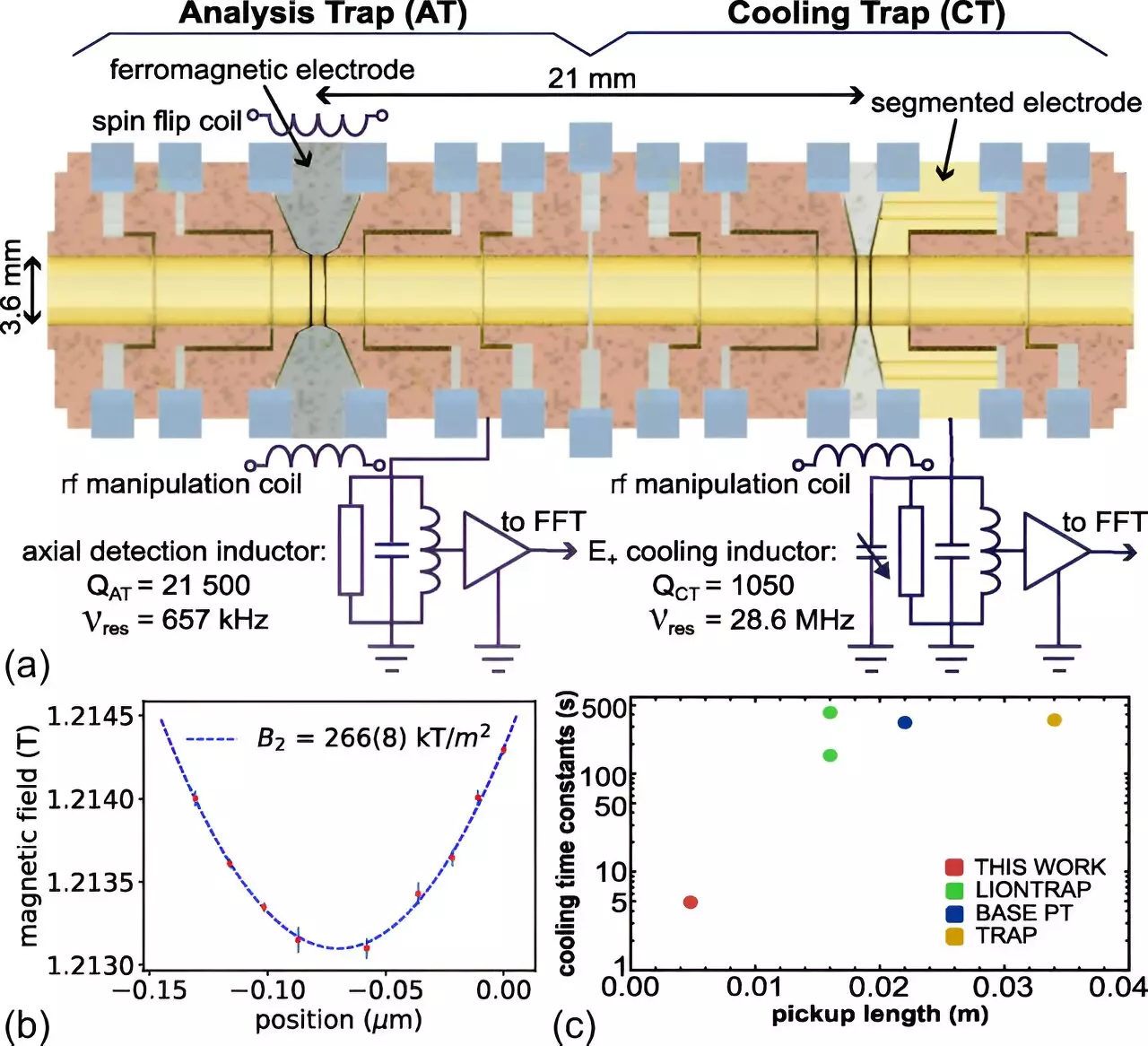The longstanding question of why the universe contains matter in abundance while antimatter remains scarce has puzzled scientists for decades. According to the standard model of particle physics, the Big Bang should have produced equal amounts of matter and antimatter, which would ultimately annihilate each other, leaving a universe devoid of material objects. However, observations show that this is not the case. The BASE international research collaboration at CERN, led by Professor Dr. Stefan Ulmer from Heinrich Heine University Düsseldorf, aims to uncover the reasons behind this matter-antimatter imbalance.
The researchers at BASE have made a significant experimental breakthrough by developing a trap that can cool individual antiprotons much more rapidly than previous methods. This advancement allows for more precise measurements of the mass and magnetic moment of antiprotons, shedding light on possible matter-antimatter asymmetries. By studying the spin-flip quantum transitions of ultra-cold antiprotons, the physicists hope to determine whether matter particles and their corresponding antimatter particles exhibit identical properties at the fundamental level.
The newly developed “Maxwell’s daemon cooling double trap” combines two Penning traps to selectively cool the coldest antiprotons for spin-flip measurements. This innovative cooling technique reduces the cooling time from 15 hours to just eight minutes, enabling the researchers to collect sufficient data for high-resolution measurements in a fraction of the time. With the improved cooling method, the BASE collaboration has achieved a level of precision that was previously unattainable, narrowing down the magnetic moment differences between protons and antiprotons to one billionth.
Looking ahead, Professor Ulmer envisions constructing a mobile particle trap to transport antiprotons from CERN to a new laboratory at HHU. This mobile trap would not only facilitate the transfer of particles but also enhance the accuracy of measurements by a factor of ten. By leveraging advanced trapping technologies, such as Paul traps and Penning traps developed by Wolfgang Paul and Hans G. Dehmelt, respectively, the researchers can store and manipulate individual particles with unprecedented precision, paving the way for groundbreaking discoveries in antimatter research.
The quest to unravel the mysteries of antimatter holds profound implications for our understanding of the universe at its most fundamental level. By delving into the properties of antiprotons and their interactions with matter, scientists hope to unlock the secrets of the matter-antimatter disparity and potentially revise the existing models of particle physics. The meticulous measurements conducted by the BASE collaboration represent a crucial step towards unraveling one of the most enduring enigmas in modern science and pushing the boundaries of human knowledge to new frontiers.
The groundbreaking research conducted by the BASE collaboration at CERN offers a glimpse into the intricate world of antimatter and its implications for the universe as we know it. By harnessing cutting-edge technologies and pushing the limits of experimental precision, scientists are poised to shed light on the matter-antimatter dichotomy and pave the way for unprecedented discoveries in the realm of particle physics.



Leave a Reply